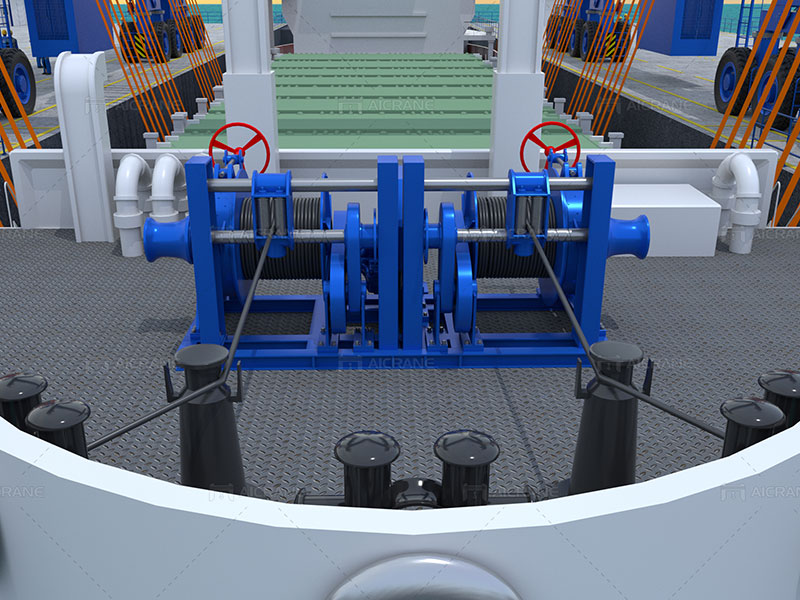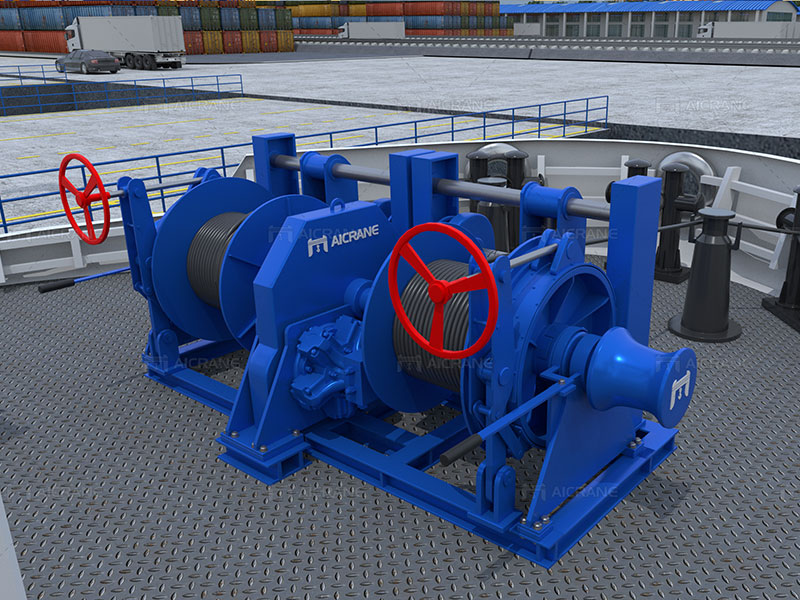Mooring winches are essential pieces of equipment in the maritime industry, playing a crucial role in securing vessels to docks, piers, or other structures. The correct installation of a mooring winch is paramount to ensure its safe and efficient operation. This comprehensive guide will take you through the step-by-step process of how to install a mooring winch correctly, highlighting the key considerations and best practices for a successful installation.

Before You Begin
Safety First:
Prior to installing a mooring winch, safety should be the top priority. Ensure that the installation area is safe and secure for both the installation team and other workers in the vicinity. Have the necessary personal protective equipment (PPE) on hand, including helmets, gloves, safety goggles, and high-visibility vests.
Read the Manufacturer’s Manual:
Every mooring winch model may have unique installation requirements. It’s essential to thoroughly read and understand the manufacturer’s manual that comes with your specific winch. This will provide critical guidance on installation procedures, maintenance, and safety precautions.
Site Assessment:
Conduct a thorough site assessment to determine the best location for the mooring winch. Consider factors such as the proximity to the water, accessibility for maintenance, and the structural integrity of the mounting location. It’s also important to ensure the winch is positioned to allow easy access to mooring points on the vessel.
Installation Steps
Prepare the Installation Site:
a. Clear the installation site of any debris, obstacles, or other materials that may impede the installation process.
b. Ensure the surface where the winch will be installed is level and stable.
c. Check the site for any underground utilities or obstacles that may interfere with the installation.
Anchor Points:
Determine the anchor points for the mooring winch. These anchor points should be structurally sound and capable of withstanding the load and tension exerted by the winch during mooring operations. Common anchor points include concrete foundations, steel structures, or reinforced mounting platforms.

Mounting Bracket:
a. Attach the mounting bracket or base plate to the selected anchor points using heavy-duty anchor bolts, expansion anchors, or other suitable fasteners. Ensure that the fasteners are tightened to the manufacturer’s specifications.
b. Make sure the mounting bracket is level and plumb to ensure proper alignment of the mooring winch for ships.
Position the Winch:
a. Carefully position the mooring winch on the mounting bracket. Depending on the winch type, it may be a vertical or horizontal installation.
b. Ensure that the winch is aligned correctly with the mooring point on the vessel.
Connect Power Supply:
a. If the mooring winch is electrically powered, connect it to a suitable power source following electrical codes and safety standards. It’s essential to have a qualified electrician handle the electrical connections.
b. For hydraulic or pneumatic winches, connect the appropriate hoses or lines to the power source while observing recommended safety practices.
Secure the Winch:
a. Fasten the mooring winch to the mounting bracket securely. Ensure that all bolts and fasteners are tightened to the manufacturer’s specifications.
b. Double-check the alignment of the winch to make sure it is parallel to the mooring point on the vessel.
Install Safety Guards:
Depending on the winch’s design and the manufacturer’s recommendations, install safety guards to protect personnel from moving parts and the winch mechanism. Safety guards are essential to prevent accidents and injuries during operation.
Lubrication and Maintenance:
a. Apply appropriate lubrication to moving parts, such as the winch drum and bearings, as per the manufacturer’s instructions.
b. Set up a regular maintenance schedule to inspect and maintain the marine winch to ensure its continued safe and efficient operation.
Test the Winch:
Before the mooring winch is put into full operation, conduct a series of tests to ensure its functionality and safety:
a. Test the winch’s operation by engaging and disengaging it to ensure it functions smoothly.
b. Test the winch under load conditions to confirm that it can handle the intended mooring task safely and effectively.
c. Verify that all safety features and emergency stop mechanisms are operational.
d. Conduct a thorough inspection for any unusual noises, vibrations, or signs of malfunction.
Documentation:
Keep thorough records of the installation process, including any adjustments made, testing results, and maintenance schedules. These records will be invaluable for future inspections and maintenance.
Conclusion
The correct installation of a mooring winch is essential to ensure the safe and efficient mooring of vessels in the maritime industry. Following the manufacturer’s guidelines, conducting a site assessment, and adhering to safety protocols are crucial steps in this process. By properly anchoring the winch, connecting the power supply, and installing safety guards, you can enhance the reliability and durability of the mooring winch. Regular maintenance and testing further ensure its continued safe and effective operation. Correct installation not only contributes to the safety of maritime operations but also extends the lifespan of the mooring winch, reducing operational costs and enhancing overall efficiency.